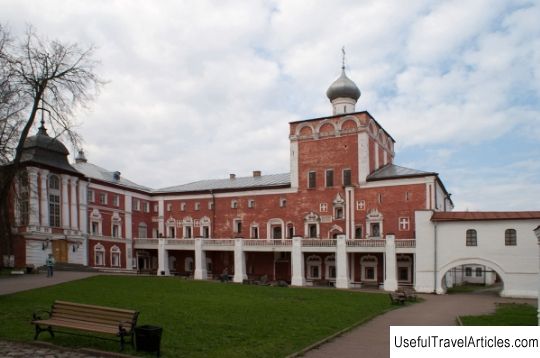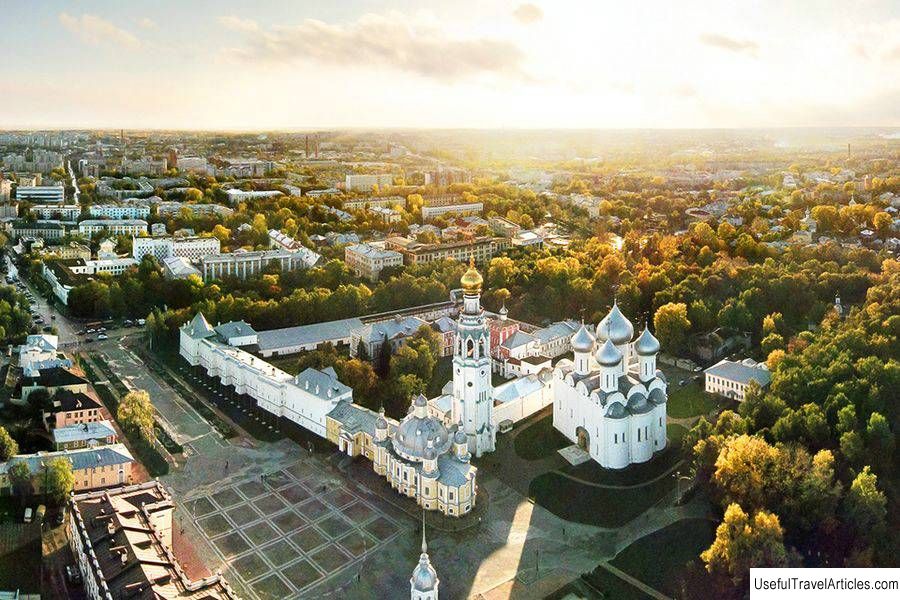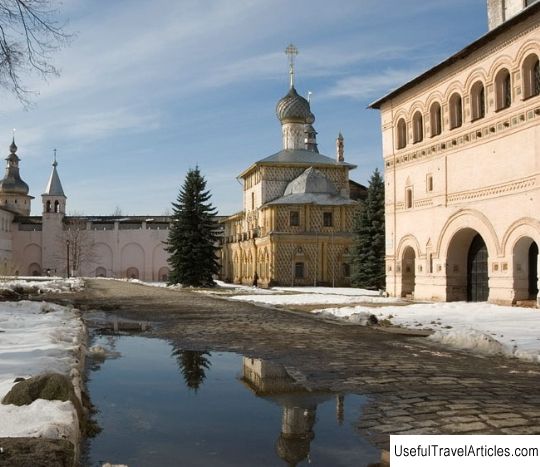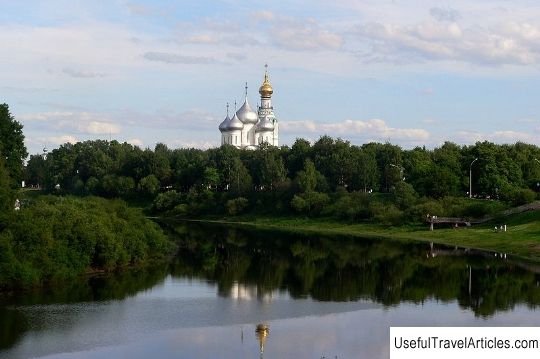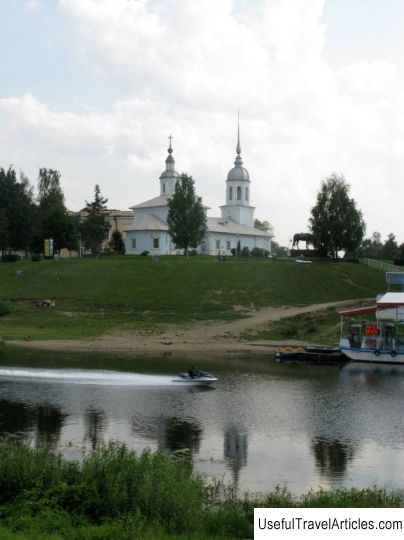Bishops' court description and photos - Russia - North-West: Vologda
Rating: 8,5/10 (8796 votes) 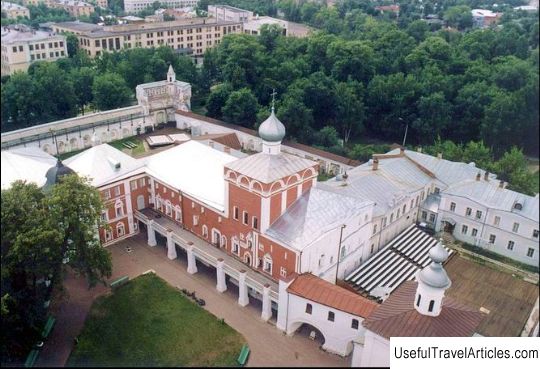
Bishops' court description and photos - Russia - North-West: Vologda. Detailed information about the attraction. Description, photos and a map showing the nearest significant objects. Photo and descriptionNot far from the St. Sophia Cathedral there is the formerly functioning Bishops' Court enclosed by stone walls, which is a complex of buildings of the Vologda archbishops. Initially, the chambers of the bishops were located near the Resurrection Cathedral on Lazy Square. In the 60s of the 16th century, the Bishops' Court was moved to the area of the Kremlin under construction. At first, the buildings of the bishop's residence were made of wood, and the courtyard was surrounded by a wooden fence and several gates. In the middle of the 17th century, the Three Saints House Church was built over the gate. By the middle of the 17th century, all the premises necessary for the diocesan administrative center appeared in the residence of the bishops. There were "government", "cross", bishop's cells, a "sticky" church, a "gate" hut and numerous auxiliary rooms. All these wooden buildings were rebuilt more than once, as can be judged from various documentary archives, for example, from the Vologda scribe book of 1627. At the end of the 1650s, the first stone building that belonged to the House of Bishops appeared - the Economic Building, where the treasury and state cells were located. The second stone building of the diocesan courtyard was named the Simonovsky building or the Bishops' chamber, which has a single-domed smoke church of the Nativity of Christ. The building was named after Archbishop Simon, during whose lifetime it was built during 1669-1671. During the 17th - first half of the 18th century, the Simonovsky building was considered the most luxurious building of the episcopal residence, as well as the whole of Vologda. Later built extensions only distorted not only the external, but also the internal appearance of this structure. As a result of the restoration of the 1960s, in some way, the previously existing luxurious architectural appearance of the building facades was partially restored. Even now, the Simonovsky building is considered a unique example of civil architecture of the second half of the 17th century. Immediately after the Bishops' Court was built, it was surrounded by high walls made of stone, which were inextricably linked with the adjacent outbuildings. The surprisingly high fence with loopholes and covered passages along the inner side resembles a fortress, despite the fact that it has never been attacked by enemy troops. This kind of attributes of serf architecture carried a purely symbolic character. The erection of such powerful walls was caused only by the ideological tasks of glorifying and exalting the church and the bishop. The erection of ceremonial and extensive residences for spiritual authorities was especially typical of the late 17th century. Over time, new buildings appeared in the Bishops' court, and the old ones were built on and rebuilt. Most of the buildings inside the courtyard are closely connected with the walls, which creates the illusion of a single whole and is of considerable interest from the point of view of the preserved unique samples of the 17th century. In the late 17th - early 18th centuries, a new building appeared - the Gabriel building, which from the southern side was adjacent to the bishops' chambers. Soon after its construction, in the eastern part of the courtyard, a functionally significant building was added - the Nameless building, in which the treasury and state cells were located. In the 17th century, Gabriel's building was renamed to Irineevsky. In the 1740s, stone one-story storerooms appeared, perpendicularly located to the Simonovsky building. As a result, the building was greatly altered, which also influenced the facade of the building, which was previously made with figured architraves. Thus, all the architectural structures participating in the ensemble played a very important role in the image of the harmonious Bishops' court. In addition, it is in this architectural ensemble that you can see an amazing mixture of architectural styles of the accompanying three centuries. At the moment, there are two entrances to the former Bishops' court: one is located in the northern part of the stone fence leading to the Consistorsky courtyard, and the second is in the span between the bell tower and the Resurrection Cathedral.        We also recommend reading Coron Island description and photos - Philippines: Palawan Island Topic: Bishops' court description and photos - Russia - North-West: Vologda. |
